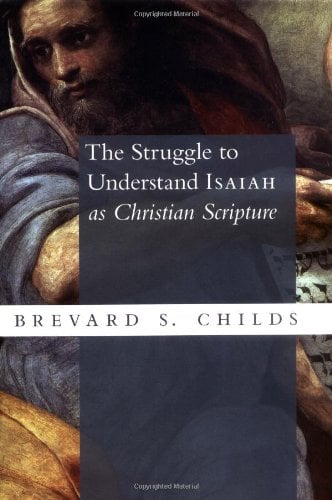T.K. Cheyne (1841-1915) was a professor at Oxford who began with rather conservative views about Isaiah and the OT (partly under the influence of Delitzsch), and ended much less so. At first his work just focused on rather uncontroversial attention to historical, philological, text critical issues. He says the authorship of Is. 40-66 is an open question. By 1889, he is talking in the following way—there is a foreshadowing of Christ in Isaiah. They are not conscious prophecies. There is no Heilsgeschichte between the OT and the NT in his later writings, nor is the NT a culmination of the OT ideal. Instead he speaks about a correspondence between the OT and NT especially visible in the Psalms and Isaiah a correspondence that can be sustained and maintained only by a rigorous philological analysis.
A.B. Davidson of Edinburgh was another figure who began with a conservative stance and gradually was more and more influence by German scholarship. He did not write a commentary on Isaiah but was an enormous influence on his students G.A. Smith and W.R. Smith. Davidson speaks of Christ as the fulfillment of Is. 53, but at the same time he says that the prophet probably had in his mind the nation as God’s servant. He wasn’t consciously thinking about Christ.
With J.K. Skinner’s commentary on Isaiah we see the full embrace of a historical critical approach to the book. He argues that two thirds of the book are anonymous oracles which cannot be ascribed to the historical Isaiah, including all of Is. 40-66 and some of Is. 1-39. S.R. Driver, in his famous Introduction to the OT, which was even translated into German, and provides a succinct guide to the historical-critical method, and simply agrees with Skinner’s conclusions. They both assume that ANE data must be used to help figure out the chronology of the book of Isaiah, indeed the chronology of the OT must be compared to and tagged to the Assyrian monuments.
In other words, secular history must be used to make sense of and sort of sacred history. Once, secular history was viewed in light of what the Biblical prophecies said, now Biblical prophecies were viewed and interpreted in the light of secular history. Skinner, in dealing with Is. 7.14 says that this was an actual prediction of the coming of a messiah, which went unfulfilled. No problem, he says since unfulfilled prophecies are a standard thing in the OT, and a text like Is. 7.14 still retains its religious value as long as the ideal to which it points remains an object of faith and aspiration. Driver, more mildly, suggests Is. 7.14 is an ideal projection upon the future. Isaiah is viewed as a literary genius whose conceptions were ‘independent of time’, he was a visionary. As Childs says, this amounts to viewing Isaiah within purely anthropological categories.













